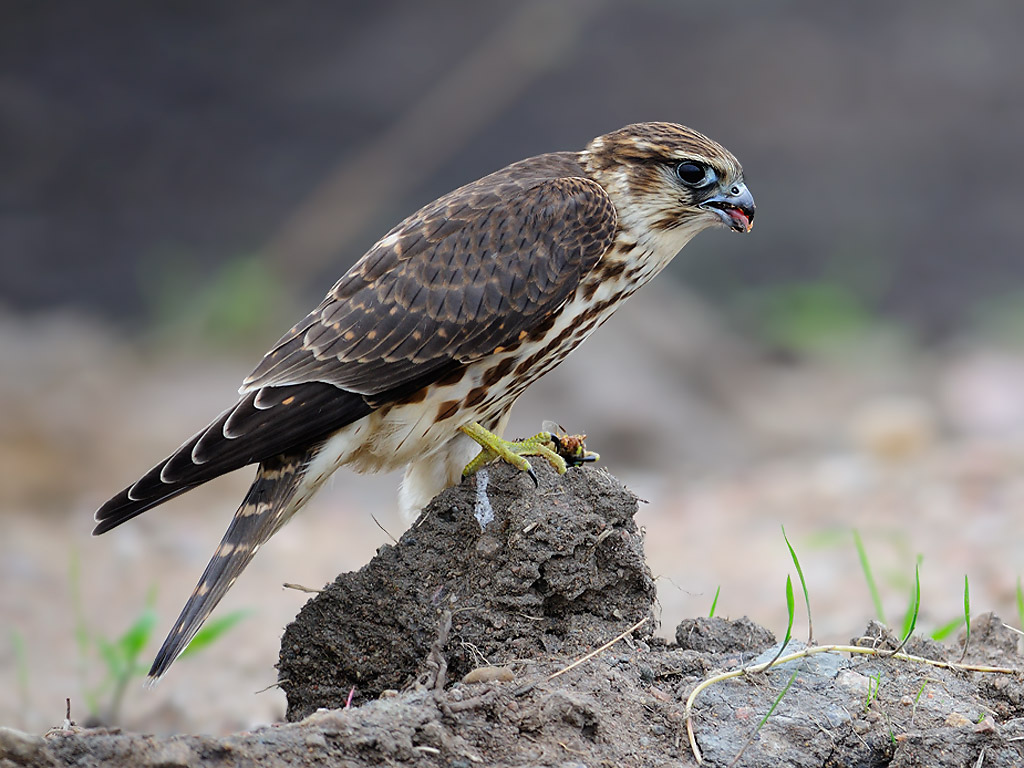Merlin
(Falco columbarius)

Description
The merlin (Falco columbarius Linnaeus,1758 ) is a bird falconiforme the family of Falconidae.This small species of hawk of the northern hemisphere,colloquially known in North America as pigeon hawk (" pigeon hawk "),nests in the northern holartic regions;some specimens migrate in the winter to the subtropical regions and the more northern tropical ones.Some scholars consider the North American and Eurasian populations of F.columbarius as two distinct species.The first modern taxonomist to describe the emery was the Swedish Linnaeus,who indicated as an example an individual from America.Thirteen years after Linnaeus's description,Marmaduke Tunstall,in his Ornithological Britannica,reclassified the European individuals as a distinct taxon,aesalon.If the two species were officially recognized,the birds of the Old Worldthey should be classified under the scientific name F.aesalon.The emery is 24-33 cm long and has a wingspan of 50-67 cm.Compared to other small falcons,it has more robust and heavy constitution.On average males weigh 165 g and females about 230 g.However,there are significant variations in size,both depending on the areas of the area and - especially in migrant populations - for the period of the year.The dimensions,therefore,can vary between 150 and 210 g for males and between 190 and 255 g for females.The sexual dimorphism is typical of many birds of prey;allows males and females to capture different prey and thus allows reproductive couples to occupy smaller territories.The male emery has the back generally gray-blue,but depending on the subspecies takes on tones ranging from almost black to silver gray.The lower regions vary from the chamoisorange and may be more or less marked by stripes varying in color from black to reddish brown.The females and the young have a back ranging from gray-brownish to dark brown and the chamois-whitish belly stained with brown.Except for a thin whitish eyebrow stripe and for inconspicuous dark whiskers - scarcely visible in both lighter and darker specimens - the emery face is less mottled than most other hawks.The nests are covered by a light suede down which becomes more white on the belly.The remiges are blackish and the tail usually has 3-4 wide bands,also blackish.The male specimens of very light color have only slightly perceptible gray bands,while the darker ones have bands so wide that it seems that their tail is marked by thin lighter stripes.In all the emery,however,the end of the tail is black with a very thin white stripe on the outer margin;most likely this aspect of the tail is a plesiomorphic feature of all hawks.Nevertheless,the color of the tail is quite different from most of the similar species,remembering only that of the hawk aplomado (F.femoralis) and (in the light specimens) of some real kestrels.The eyes and the beak are dark;the wax is yellow,as well as the legs,with black claws.The light-colored American males may resemble the American kestrel (F.sparverius,which,despite its name,is not a kestrel proper),but has a gray back and a reddish-brown tail.The European ones,on the other hand,are distinguished by the kestrels for the brown color of the wings.In the north of southern Asia,wintering males can be confused with the red-headed hawk (F.chicquera) if,in flight,the head (red on the top in F.chicquera) or the back (finely striped in black in F.chicquera).
Taxonomic tree:







